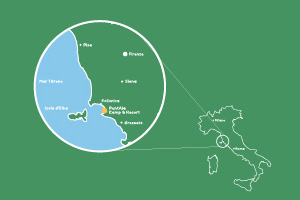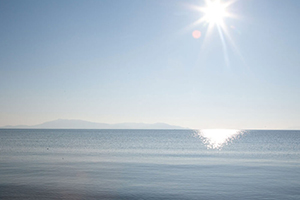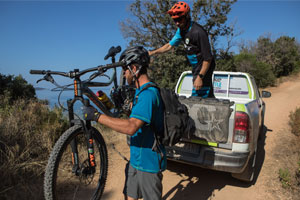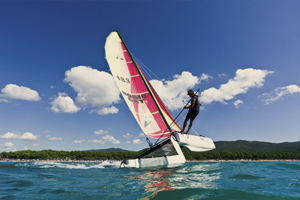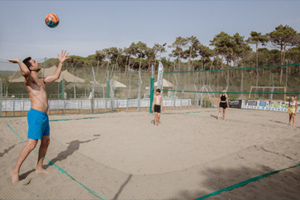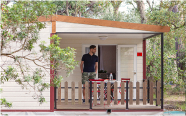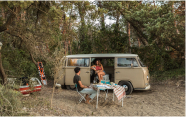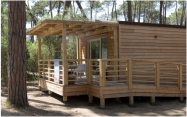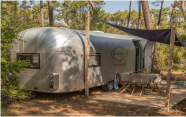Monte Amiata: its municipalities, what to do, what to see and how to get there
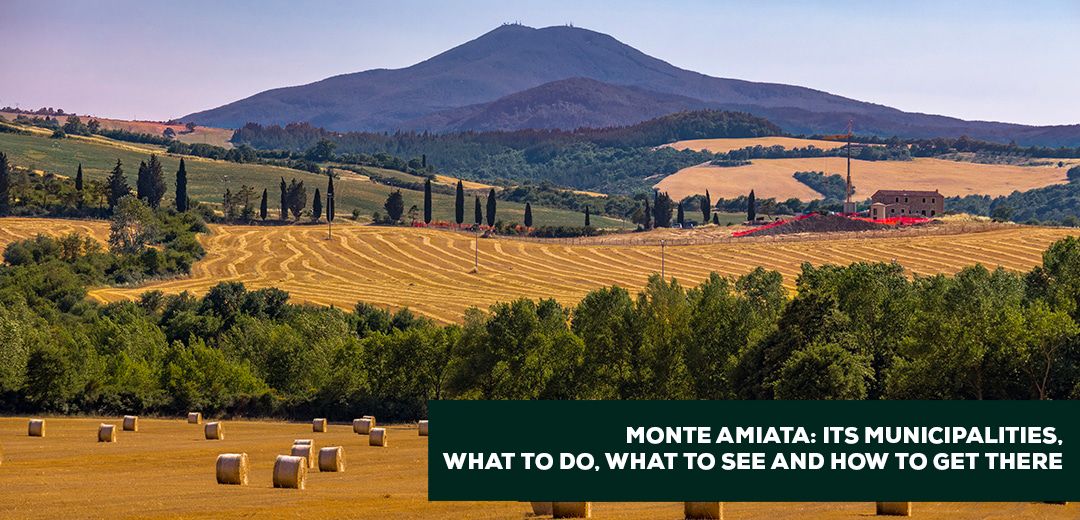
Monte Amiata is a popular year-round holiday resort, due to its ski slopes, hiking trails and spectacular views. Earlier volcanic activity shaped this peak, located between the provinces of Siena and Grosseto, which offers a varied assortment of experiences all year round.
The mountain is divided into eight municipalities, each offering unique attractions, from historical sites to picturesque landscapes. Activities range from exploring nature trails in summer to skiing and snowboarding in winter, offering the opportunity to combine a visit to one of central Italy's highest peaks with classic Tuscan scenery.
Mount Amiata
Mount Amiata, the most prestigious peak in southern Tuscany, is a popular year-round tourist destination, thanks to its ski slopes and ideal walking trails. It hosts hotels, B&Bs and holiday homes.
Amiata offers breathtaking views, lush nature and crystal-clear skies. The original volcanic activity has left its mark on this mountain, located in the heart of Tuscany, between the provinces of Siena and Grosseto. It is a tourist destination to be treasured, both in summer and winter: in the summer months, one can enjoy wonderful days outdoors exploring the various trails in the area, while in winter, Amiata is clothed in a white mantle, becoming a paradise for skiers and snowboarders. This location offers a diverse experience for every season, remembering that we are in Tuscany, a region that, in addition to Amiata, offers the renowned rolling hills, vineyards, rows of vines, and everything that makes Tuscany a favourite destination for tourists from all over the world. A holiday here can therefore combine a visit to one of the highest peaks in central Italy with the discovery of classic Tuscan landscapes, for a truly unique and winning mix in the name of nature.
Mount Amiata municipalities
Mount Amiata is divided between 8 municipalities, 3 of which are in the province of Siena and 5 in the province of Grosseto: Arcidosso, Castell'Azzara, Castel del Piano, Santa Fiora, Seggiano, Abbadia San Salvatore, Castiglione d'Orcia and Piancastagnaio. To these are added another five distributed between the two provinces, which are not directly part of the mountain but are part of the Union of Monte Amiata Municipalities. In total, counting the municipalities of the Union, the area boasts a population of 32,000 inhabitants.
Arcidosso
Arcidosso is the capital of the Unione dei Comuni Amiata Grossetano and boasts a population of about 4500 inhabitants. In the historical centre, which is located on the top of a hill, one can find places of interest such as the church of San Niccolò, the oldest in the area, the fascinating Capuchin monastery and the unique Gompa di Merigar West, a sacred Tibetan building, located on Mount Labbro.
Castell'Azzara
The enchanting Castell'Azzara, located 815 metres above sea level, is the highest municipal seat in the province of Grosseto. Visiting the place, you can admire the church of San Nicola di Bari, which houses a marvellous painting of the Assumption with Saints Martin and Nicholas from 1600. Walking along Via Dante Alighieri, one can stop and contemplate the town hall, built in the 19th century in Renaissance style. Also worth a visit is the Rocca aldobrandesca, or fortress of Castell'Azzara, a 12th-century fortification built at the highest point of the town.
Castel del Piano
Castel del Piano is the largest and most populated municipality on the Grosseto side of Mount Amiata. With almost 5000 inhabitants, once in the centre you can visit the church of the Propositura, located just outside the Porta dell'Orologio gate, and the beautiful church of Santa Maria delle Grazie, in Piazza Madonna. The village is surrounded by 13th-century walls that are still well preserved. The three gates that give access to it are the Porta dell'Orologio, the Porta Castiglionese and the Porta Spennanziana.
Santa Fiora
The municipality of Santa Fiora, in the province of Grosseto, is a member of the club of the most beautiful villages in Italy, and at the same time has been awarded the prestigious Orange Flag recognition by the Italian Touring Club, thanks to its excellent tourist, environmental and historical-cultural characteristics. Pay a visit to the historical centre, the heart of which is Piazza Garibaldi with its clock tower, Palazzo Pretorio and Palazzo Sforza Cesarini, and do not miss the parish church of Saints Flora and Lucilla, dating back to 1142. Don't miss a visit to a park-garden called the Peschiera, located in the Montecatino district. Here you will also find a basin that throughout its history has been used first as a drinking trough and then as a public washhouse.
Seggiano
Seggiano is surrounded by walls that completely enclose it; access is through three gates: Porta di San Gervasio, Porta degli Azzolini and Porta del Mercato.
Abbadia San Salvatore
Abbadia San Salvatore, located in the province of Siena, is one of the largest and most populous municipalities of the Amiata. Its name derives from the Abbey of San Salvatore, custodian for a millennium of the prestigious Bibbia Amiatina, the oldest manuscript version of the Bible in Latin, now kept in the Biblioteca Medicea Laurenziana in Florence. After a visit to the abbey, one cannot ignore the Don Roberto Corvini Museum of Sacred Art, located in the eastern wing of the cloister, where one can admire the monastery's treasures. The presence of a mining museum reveals Abbadia San Salvatore's past linked to this activity. Here, one can walk through a 300-metre tunnel that reproduces the miners' working environments.
Castiglione d'Orcia
Although Castiglione d'Orcia is relatively far from Monte Amiata, it is undoubtedly the most important tourist destination in the area, thanks to its position on the famous Val d'Orcia, a UNESCO heritage site since 2004. Among its hamlets is Bagni San Filippo, a renowned spa resort.
Piancastagnaio
Piancastagnaio, also an Amiata municipality in the province of Siena, is located at the southern end of Tuscany, on the border with Lazio and the province of Viterbo. Its characteristic historical centre invites you to visit the Aldobrandeschi Castle, an ancient public washhouse from the 19th century, and the monumental Witches' Dish, a piperina stone dish at the centre of a legend that tells of three little girls saved from a fight between witches.
Radicofani
Radicofani is one of the southernmost municipalities of Mount Amiata, known mainly for its fortress, which dominates the entire Val d'Orcia. The fortress, located on the top of a hill, was a reference point for pilgrims travelling along the Via Francigena. Today, after careful restoration work, it can be visited and offers a breathtaking view over the valley. No less important is the church of San Pietro, a religious building of Romanesque origin that has been remodelled over the centuries.
Santa Fiora
Santa Fiora is located in the southern part of the Amiata and is one of the most densely populated municipalities. Its historic centre is divided into four districts: the Borgo, the Castello, the Monticello and the Selva. Santa Fiora is famous for the Peschiera, a large pond fed by the waters of the Fiora River, around which is a beautiful park, ideal for walks and relaxing moments. Worth visiting are the church of Santa Flora and Lucilla, dating back to the 12th century, and the Palazzo Sforza Cesarini, an imposing 16th-century structure.
Seggiano
Seggiano is part of the Amiata municipalities and is located in the province of Grosseto. It is the smallest of the eight, in fact it has less than 1,000 inhabitants, and is located on the summit of a hill not far from the bed of the Orcia river. Several sacred buildings are worth a visit, such as the ancient Colombaio monastery, the church of San Bartolomeo, and the remarkable sanctuary of the Madonna della Carità, restored several times since its construction.
Seggiano is surrounded by walls, which enclose it entirely; it can be entered through three gates, called Porta di San Gervasio, Porta degli Azzolini and Porta del Mercato.
Monte Amiata in summer
During the summer, Monte Amiata offers a wide choice of historical and naturalistic itineraries, making it possible to spend wonderful days outdoors in an active atmosphere. One of the activities not to be missed, thanks to the numerous reserves and protected areas in the area, are long walks in the woods, including the Monte Labbro nature reserve, the Amiata wildlife park and the WWF Bosco Rocconi oasis. It is worth discovering the hermitage of David Lazzaretti, the so-called 'prophet of Amiata', the centrepiece of the Jurisdavidic community he founded in the 19th century, who was killed by a group of soldiers at the entrance to Arcidosso during a procession. In summer, Monte Amiata is synonymous with trekking: there are no less than 19 signposted itineraries through its woods, for a total of about 210 kilometres. These trails can be travelled on foot, on horseback or by mountain bike. Among these, the Monte Amiata ring, a circular route of about 30 kilometres that encompasses the entire coastline of the mountain, maintaining a constant altitude between 1100 and 1300 metres, is the best known. The complete route takes about twelve hours and also includes a climb to the summit of Monte Amiata, where a monumental 22-metre high iron cross, made by the Sienese craftsman Zalaffi, stands. To follow in the footsteps of the pilgrims, return to the valley and head towards Abbadia San Salvatore, crossed by the Via Francigena. Particularly attractive for children are the Indiana Park and the adventure park, located in the area of the Macinaie meadow.
Monte Amiata in winter
During the winter, Monte Amiata turns into a true paradise for winter sports enthusiasts. The well-maintained ski slopes, suitable for all levels, are the main attraction for tourists. There are eight ski lifts and eighteen ski slopes, for a total of about twenty kilometres. The slopes are equipped with an artificial snow system, so that skiing is possible even in unfavourable weather conditions. For the little ones, there is also a snow playground, where children can have fun in safety. Those who prefer cross-country skiing, on the other hand, can take advantage of a ten-kilometre track through the mountain's beautiful forests.
In addition to skiing, Mount Amiata also offers the possibility of taking beautiful walks with snowshoes, trying the thrill of bobsleighing or sledging, or simply enjoying the snowy panorama from the top of the mountain, perhaps sipping a cup of hot chocolate in one of the many refuges present.
Monte Amiata: A Nature Trail
In the heart of the Monte Amiata park, there is a nature trail, stretching north-northeast from the Podere dei Nobili. The path, rich in vegetation and cut by the Onazio stream, is equipped with wooden guides, fords and signposts for the different plant species. This makes it possible to discover the forest, examine the vegetation, cross the Onazio and visit the gorges. The walk offers a rich and stimulating experience, ideal for a trek of medium difficulty, immersed in a varied forest stretching towards the Onazio River. The forest, consisting of aged coppice, is surrounded by chestnut groves and tall forests.
Multiple excursions on Monte Amiata
Trekking enthusiasts can plan several itineraries on Monte Amiata, connecting them with the most fascinating locations in the Maremma and Siena areas. The routes marked by the Province of Grosseto lead to Pitigliano, Saturnia, Scansano and the Argentario, while those of the Province of Siena to Montalcino, Pienza, Montepulciano, Chiusi and Siena. The Florence-Siena-Rome path crosses the forests of the Amiata and the pastures of Monte Labbro. It was inaugurated in 1996 and links the capital of Tuscany to the Italian capital in 25 stages. The marking routes of the Amiata and its surroundings can also be travelled on horseback.
Cycling on Monte Amiata
Numerous routes on Monte Amiata can be covered by mountain bike. However, most routes are better suited to a gravel bike, which is capable of tackling both paved and unpaved trails. While the frame ensures a relaxed posture, the mechanics are essentially that of a mountain bike. Classic cycle touring finds ample scope on Monte Amiata, in the upper Maremma and Val d'Orcia, preferably avoiding the Via Cassia because of its heavy traffic.
Skiing on Monte Amiata
For ski enthusiasts from southern Tuscany and northern Lazio, Monte Amiata is the ideal choice for a weekend in the snow. The ski area, consisting of 10 downhill slopes, a school camp and a 2-kilometre Nordic skiing ring, also offers snowshoeing and ski mountaineering trails. The ski lifts start from Macinaie, Contessa and Cantore, and can be reached via the Monte Amiata provincial road.
The Mount Amiata Fauna Park
The Monte Amiata Fauna Park, inspired by the German Wild Parks, but with a new and innovative methodology, is an ideal place for observing numerous species of wildlife. The park is a source of study and research, conservation of animal and plant species threatened with extinction. Many animals, including roe deer, fallow deer, mouflon and chamois, can be spotted walking along the equipped trails.
Map of Monte Amiata
How to reach Monte Amiata
To reach Monte Amiata from Florence, there are two travel routes with an approximate duration of 2 hours and 15 minutes. The first leaves from Siena, while the second passes through Arezzo and Siena. From Siena, Arezzo, Pisa, Livorno and Grosseto, the journey time varies from one and a half to two and a half hours. Access to Monte Amiata by public transport is more difficult due to the lack of public transport.
Where Mount Amiata is located
Situated in Tuscany, Mount Amiata towers 1738 metres above the Val d'Orcia and the Maremma. Acting as a divider between the provinces of Siena and Grosseto, it boasts a vegetation cover that extends to its summit.












